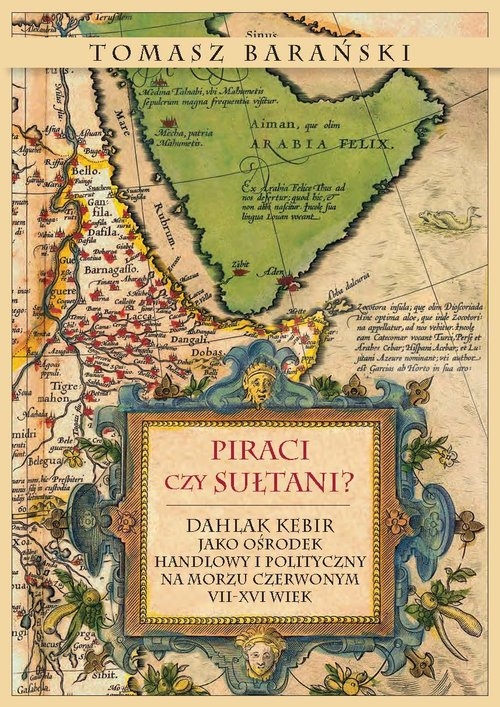Piraci czy sułtani? Dahlak Kebir jako ośrodek handlowy i polityczny na Morzu Czerwonym VII-XVI wiek
Wydawnictwo Uniwersytetu Warszawskiego

Monografia przybliża historię archipelagu Dahlak położonego na Morzu Czerwonym u wybrzeży Erytrei. Na podstawie źródeł pisanych (greckich, arabskich, judeoarabskich, etiopskich, tureckich i portugalskich) oraz badań prowadzonych na stanowisku archeologicznym Dahlak Kebir (w tym arabskich inskrypcji nagrobnych pochodzących z wysp) autor analizuje charakter polityczny i gospodarczy Dahlaku, VII–XVI wiek.
Pirates or Sultans? Dahlak Kebir as a Trade and Political Centre in the Red Sea Between the 7th and 16th Century
The monograph shows the history of the Dahlak Archipelago, located in the Red Sea, near Eritrea. On the basis of written sources (Greek, Arabic, Judeo-Arabic, Ethiopian, Turkish and Portuguese) and the research conducted at the Dahlak Kebir archeological site (including Arabic funerary inscriptions from the island), the author analyses political and economic nature of Dahlak between the 7 th and 16th century.
Pirates or Sultans? Dahlak Kebir as a Trade and Political Centre in the Red Sea Between the 7th and 16th Century
The monograph shows the history of the Dahlak Archipelago, located in the Red Sea, near Eritrea. On the basis of written sources (Greek, Arabic, Judeo-Arabic, Ethiopian, Turkish and Portuguese) and the research conducted at the Dahlak Kebir archeological site (including Arabic funerary inscriptions from the island), the author analyses political and economic nature of Dahlak between the 7 th and 16th century.
Producent:
Uniwersytet Warszawski
Krakowskie Przedmieście 26/28
00-927 Warszawa (PL)
tel: 22 55 21 888
email: [email protected]
Szczegóły
Tytuł: Piraci czy sułtani? Dahlak Kebir jako ośrodek handlowy i polityczny na Morzu Czerwonym VII-XVI wiekAutor: Tomasz Barański
Wydawnictwo: Wydawnictwo Uniwersytetu Warszawskiego
ISBN: 9788323551485
Języki: polski
Rok wydania: 2021
Ilość stron: 146
Format: 14.5x20.5cm
Oprawa: Miękka
Recenzje
Informacje:
Klienci, którzy kupili oglądany produkt kupili także:
Wilczek
Tatarak
Dzieje kultury europejskiej. Renesans
Wydawnictwo Naukowe PWN
Ostatnia owca
Dwie Siostry
Plasterki na tęsknotę
Studio Koloru
Bercia i Orson
Agora dla dzieci
Wstecz. Historia Warszawy do początku
Muzeum Warszawy












